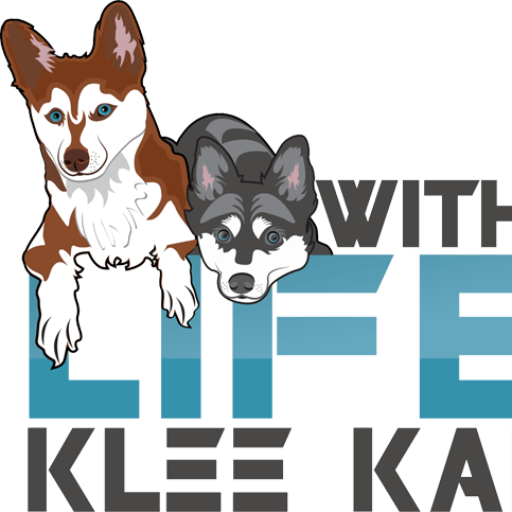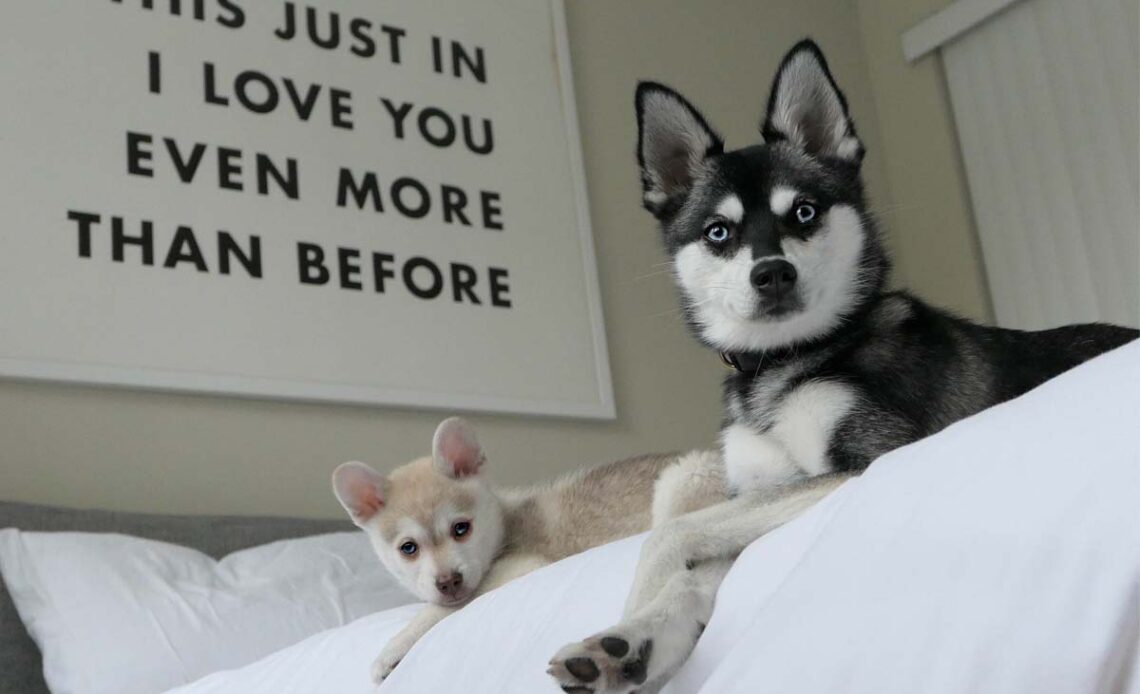
Last Updated on June 11, 2024 by Kieran Beckles
Are you an Alaskan Klee Kai owner struggling with the issue of separation anxiety? If so, you’re not alone.
I’ve got two Alaskan Klee Kai called Copper and Skye – and both of my Klee Kai struggle with separation anxiety to different degrees and display separation anxiety in different ways.
I’ve spoken to a lot of Alaskan Klee Kai owners who have struggled with this chronic canine condition since we first brought Skye home in 2017.
I’ve also spoken to dog behaviorists and dog trainers who have a specific focus on separation anxiety.
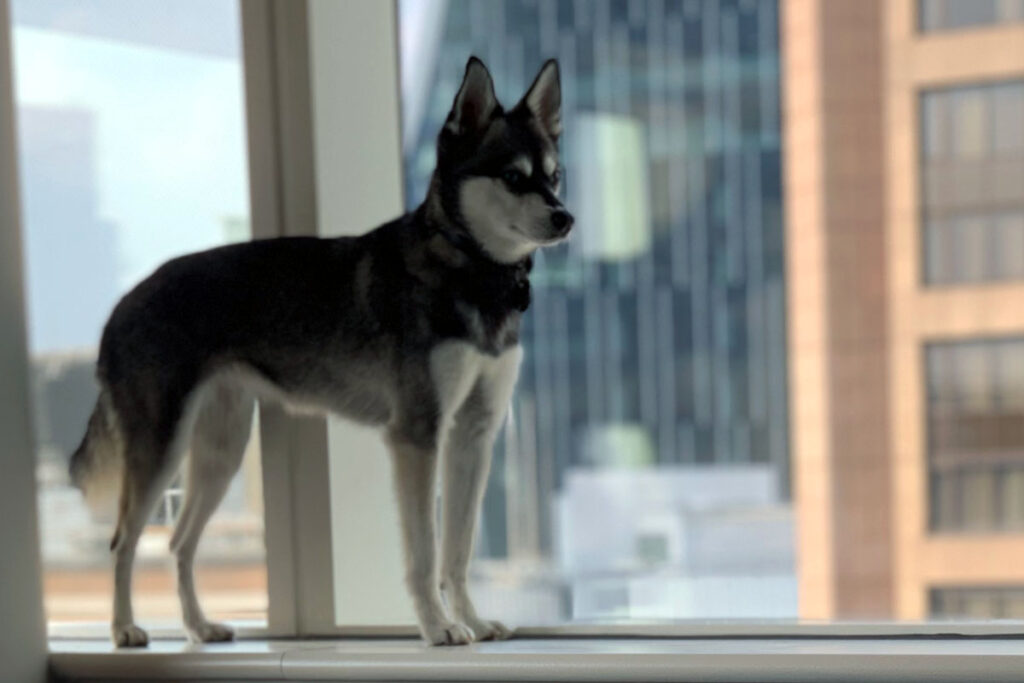
We’ve tried lots of different products to help ease Copper and Skye’s separation anxiety with mixed results.
In this article, I’m going to take a look at Alaskan Klee Kai separation anxiety.
I’ll share some helpful products and tips that could help with separation anxiety but unlikely to completely solve it as well as share feedback from other Klee Kai owners.
What Is Separation Anxiety?

Separation Anxiety is a chronic canine condition that can affect any dog irrespective of breed or mix.
Dogs will usually start to display separation anxiety when their pet parents leave the home. However, some pets may show symptoms of separation anxiety before you head out the door.
They can be extremely perceptive to the tell-tell signs that you’re about to make an imminent departure, such as putting on your shoes, grabbing your keys or getting your jacket.
Separation anxiety will usually manifest itself in the shape of persistent barking, howling or whining.
In some cases, your dog may show some destructive behaviors through chewing, digging or scratching. Your dog may rip up their bed, chew your clothes to pieces or scratch at the door.

Dogs with extreme separation anxiety may tremble or shake, or in some extreme cases, pets may defecate or urinate inside the home.
Having spoken to a dog separation anxiety trainer, she revealed to me that trying to tire your dog out at the dog park, playing music, giving them a kong for mental stimulation or even crate training won’t solve separation anxiety.
While these methods won’t hurt your dog, it won’t fix the problem.
Skye and Copper’s Separation Anxiety
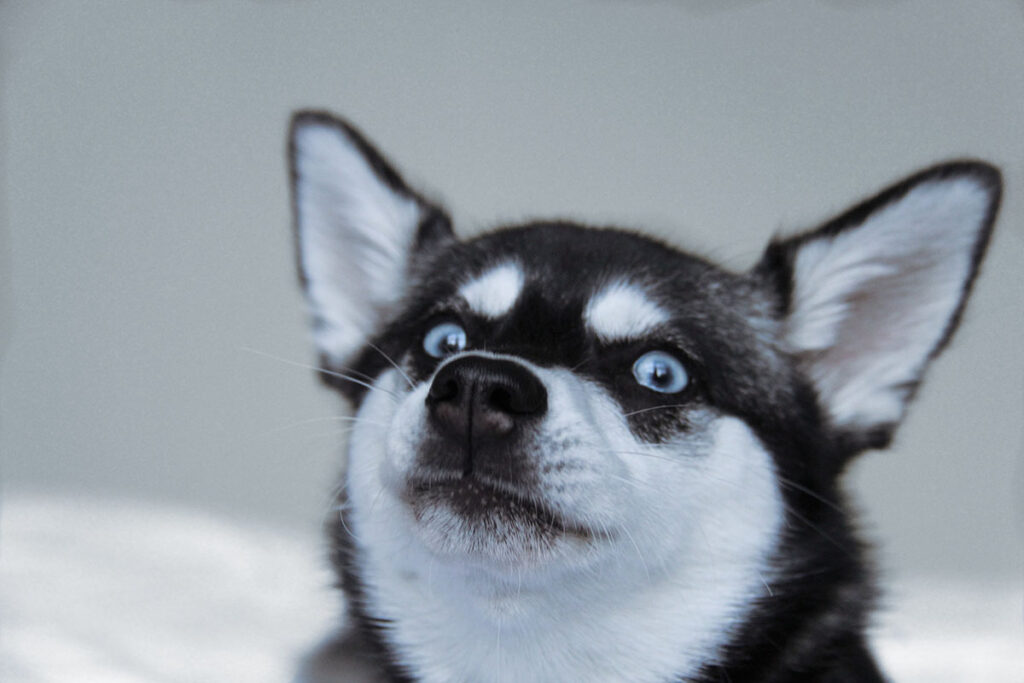
We first experienced separation anxiety within days of bringing Skye home from the breeder.
Alaskan Klee Kai are a rare dog breed created by Linda Spurlin in the 1970s. While we did some research about the dog breed, we weren’t necessarily aware of this potential issue.
She wanted to create a dog that encompassed traits of the Alaskan Husky and Siberian Husky in a much small package. Effectively she wanted a companion-sized Husky.
In our experience, we knew that Klee Kai often become velcro dogs who become particularly attached to a family member but we didn’t pay sufficient attention to separation anxiety as a potential issue.
Of course, a lot of dog breeds suffer from this condition but many Klee Kai owners have shared their traumatizing experience of leaving their Alaskan Klee Kai at home alone.
If it’s traumatizing for us, it’s much more traumatizing for our Alaskan Klee Kai.

Initially, we tried to keep Skye in our living room but after a few hours of howling at night, I moved her crate next to the side of our bed.
However, Skye continued to cry and whine all through the night despite plenty of reassurances from Yasmin and I.
We invested in a dog toy that mimics a mother’s heartbeat, and while it appeared to help our miniature husky a little, it didn’t solve the separation anxiety.
Over the next few months, Skye started to settle down at night but her separation anxiety was prevalent when we left her at home alone.
We did some crate training and Skye did seem to be more comfortable in her crate when alone rather than being left to roam the house.
If we knew that we had to leave Skye at home alone for a significant period of time, we’d take her to the dog park for a run around before we had to go in the hope she’d be a happy dog.

This approach rarely worked even with her customary daily walks and a trip to the dog park.
On one occasion, she managed to pull some of Yasmin’s clothing into her crate and chew it to small pieces.
It was after this incident we made the naive mistake a lot of dog owners tend to make – we decided to get a second dog to hopefully solve Skye’s separation anxiety by providing her with the company of an Alaskan Klee Kai.
While Skye’s separation anxiety did improve (although she appeared to internalize her separation anxiety), Copper struggled with the chronic condition on another level.
Copper vocalized his separation anxiety to an extreme degree – persistent barking, howling and whining.
How Skye and Copper’s Separation Anxiety Improved
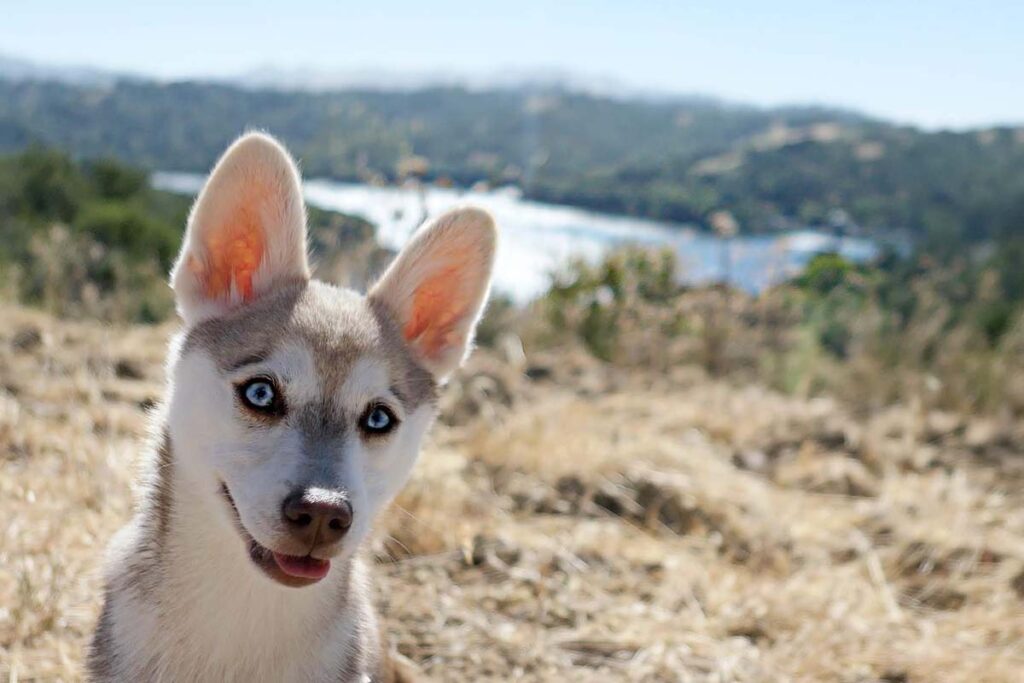
Six years later, our Alaskan Klee Kai have become better at being left at home for long periods.
Don’t get me wrong, we struggle with preventing separation anxiety. Copper and Skye are intelligent dogs and they’ll easily identify signs that we’re about to leave the home.
But our mini huskies have become a lot better at being by themselves, especially for short periods.
At the moment, our Alaskan Klee Kai are usually ok if we leave the home without them. Some days Copper and Skye will whine while we depart, other days they’ll silently watch us depart.
We worked with our Alaskan Klee Kai to improve their anxiety with some training. We would leave our mini huskies for incremental periods and try to return before they cried using our pet camera.
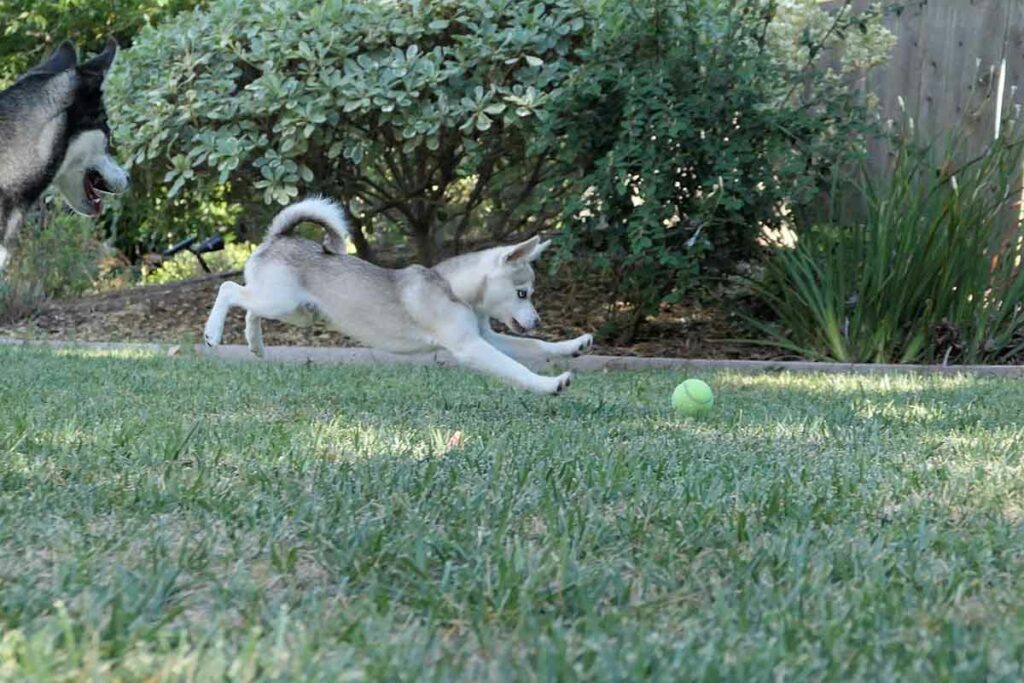
After a month or so of practicing this every day, we got to a better place. But every day is different.
We’ve noticed that sticking to a routine helps our Alaskan Klee Kai feel more comfortable. Klee Kai are very intelligent dogs and they’ve become accustomed to being alone at certain parts of the day.
When we stick to the schedule, Copper and Skye tend to be fine with us leaving.
However, unexpected exits that depart from the routine results in anxiety rearing its head.

We invested in an Impact High Anxiety dog crate which helped to create a den-like feel – something which our Alaskan Klee Kai crave.
While it was a big investment, Yasmin and I believe the High Anxiety crate has helped.
My advice to Alaskan Klee Kai owners would be persistent training to tackle the issue as well as trying to be consistent in your daily routine.
Products That Helped Soothe Separation Anxiety
There are some products that we felt helped Copper and Skye’s separation anxiety – but crucially, it didn’t fix the problem. So you may find that they won’t hurt your Klee Kai, but they won’t solve the problem.
Huggie Pup
The Huggie Pup mimics a dog’s heartbeat to simulate the feeling that your Klee Kai puppy is sleeping with its mother. The Huggie Pup has a heat pack to keep your Alaskan Klee Kai warm. You can reheat the pack using your microwave to use every night. The Huggie Pup is machine washable too. We used the Huggie Pup with Skye in the initial weeks when we brought her home from the breeder. While it won’t fix your dog’s separation anxiety, it’s unlikely to hurt. You can find the Huggie Pup on Amazon for around £29.99.
Baby Shusher
If you have a baby or toddler, you’re likely familiar with the concept of white noise to soothe your child. We always provide background noise for Copper and Skye when we leave them at home alone. You could leave the television on, find a YouTube channel with relaxing music or invest in a white noise machine such as the Baby Shusher. The Baby Shusher is priced at $34.99.
Kong
A classic approach to tackling your dog’s anxiety when you leave the home is giving your dog a Kong. Having spoken to separation anxiety trainers, they’ve explained that a Kong won’t solve your dog’s issues. But there’s no harm in providing a little mental stimulation when you leave – just be prepared for your pup’s anxiety to rise once they’re done with the Kong (if they show an interest).
Impact High Anxiety Dog Crate
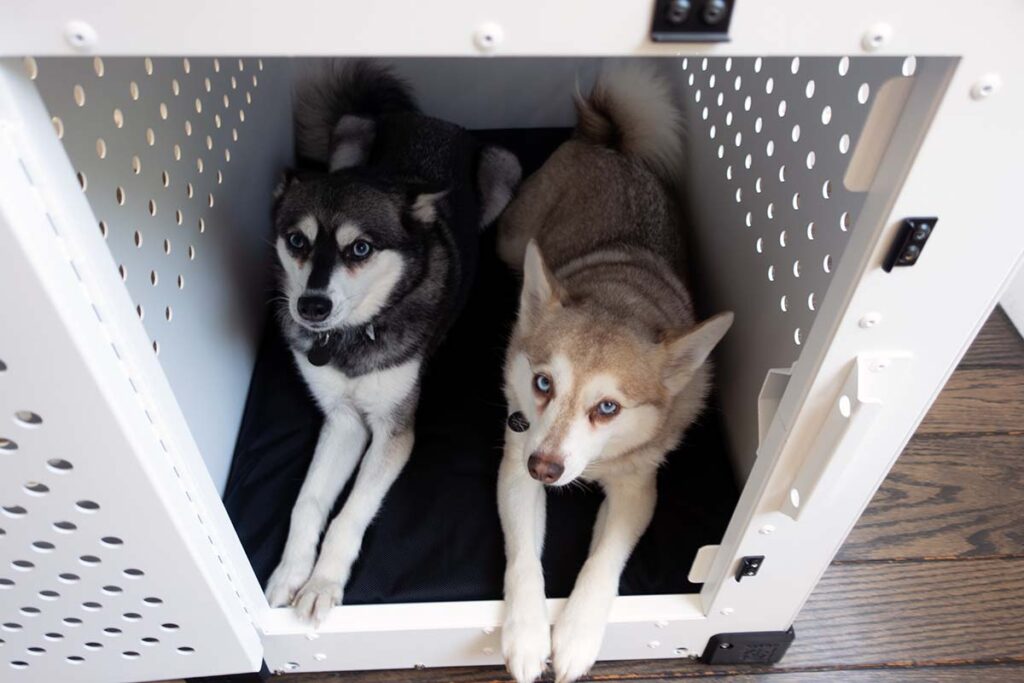
The Impact High Anxiety Dog Crate represents a significant investment but it’s a purchase that can provide dog owners with peace of mind that their pet is safe in their den-like space when left at home unsupervised. Copper and Skye really like their High Anxiety crate and often go to their crate throughout the day even if we’re at home for a moment of quiet amidst the craziness of a house with a toddler. It’s escape-proof and virtually indestructible. The High Anxiety has reinforced metal, ventilation holes for ample air flow, stackable corners, slam door hatch and lots of offer features. You can read my review in more detail here. The price of this Impact crate starts at $999.
Save 15% on High Anxiety Dog crate when you click this link and use the code “LIFEWITHKLEEKAI”.
Diggs Revol Dog Crate
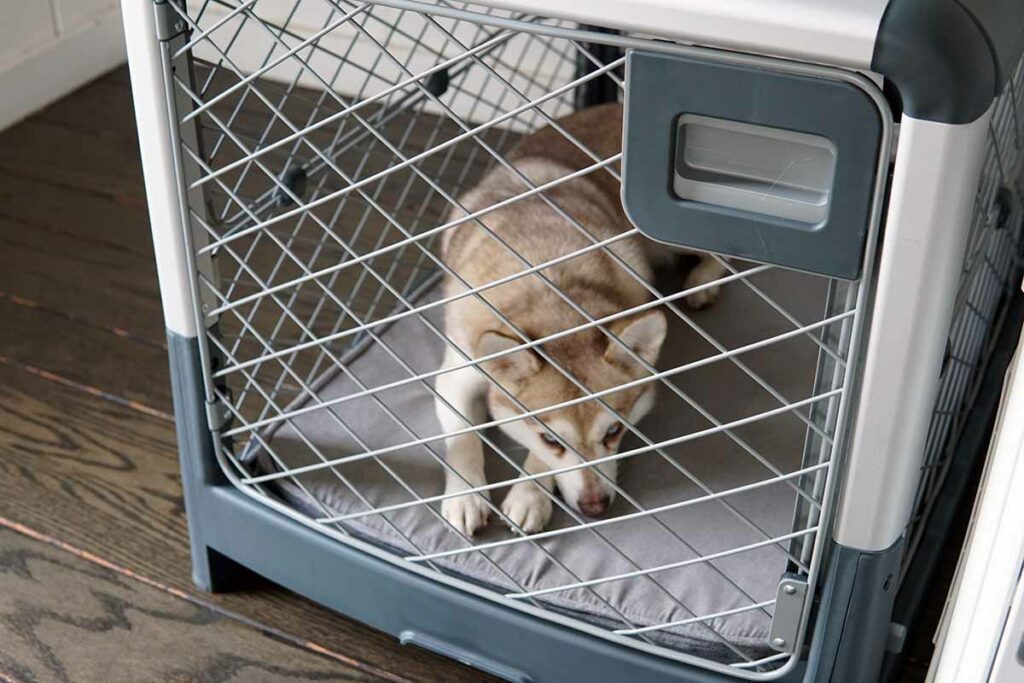
If you don’t want to invest $999 in a premium dog crate made by Impact, you could take a look at the hugely popular Revol dog crate by Diggs. I’ve also got this crate which I use a lot. However, it’s got a different design to the High Anxiety crate and hasn’t been designed with separation anxiety in mind. The Revol has a collapsible design, a garage-style door, diamond-shaped wire mesh design, solid metal frame and removable tray. The Revol dog crate starts at $475.
You can save 10% on your first Diggs Revol Dog crate when you click this link or the button below.
What Other Klee Kai Owners Have To Say
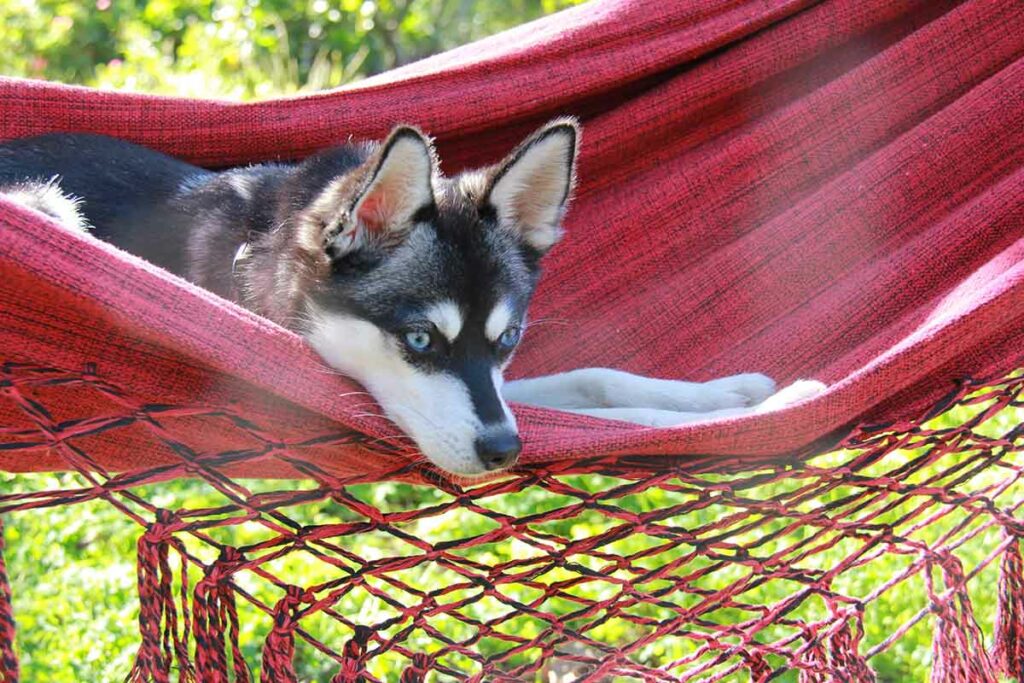
In this section, I wanted to highlight the experiences of other Alaskan Klee Kai owners taken from Reddit.
@thelockz shared the different things they’ve tried to reduce their Klee Kai’s separation anxiety:
“Niko had severe SA from the start (2mo). He would start vocalizing (barking/howling) a few seconds after being left alone and keep it up indefinitely. He would even vocalize if left with dog sitters or friends. Training without medication (6 months) was mildly effective, increasing alone time to 5-10 mins. CBD (1 month) did not make a difference. Gabapentin (3 months) was prescribed by a vet behaviorist, but was fairly ineffective. Alone time increased to 10-20mins. Reconcile was prescribed next and combined with training (3 months) it has been fairly effective, increasing alone time to more than 1 hour.”
@kiolets explains just how long her Alaskan Klee Kai can stay at home alone.
She’s handled 3 hours several times and 5 hours once (we really tired her out beforehand though). When she’s at her limit, she’ll whine and pace – occasionally she’ll let out a scream loud enough to trigger sound alerts on our pet cam, but mostly just quiet whining. She usually calms down after 10-15 minutes, but the resting period afterwards is somewhat short. we got her from a breeder. She lives with me, my boyfriend, and our two cats. since night one, we’ve always made her sleep in a crate in another room. it was rough the first two nights, but she quickly got used to it.
@buyticketsfromme shared some potential tips that worked for their Alaskan Klee Kai dogs.
“I have two Alaskan Klee Kai, two year old male and 10 month male. Brothers, different litters The dogs both know when I am getting ready to leave, everything I do from getting dressed, grabbing my keys, putting on my shoes will heighten the anxiety. I’ve found it best to do these things before I need to leave, if my dogs are beyond a threshold for their anxiety, they will go nuts(howling, crying, panting, barking) you name it they do it. If I can limit how worked up they get before I actually leave it makes it easier. Providing a frozen peanut butter or apple sauce lick mat/kong is the best distraction I could ask for. Once they focus on that I can make my way out of the apartment.”
Wrapping Up – Our Final Thoughts
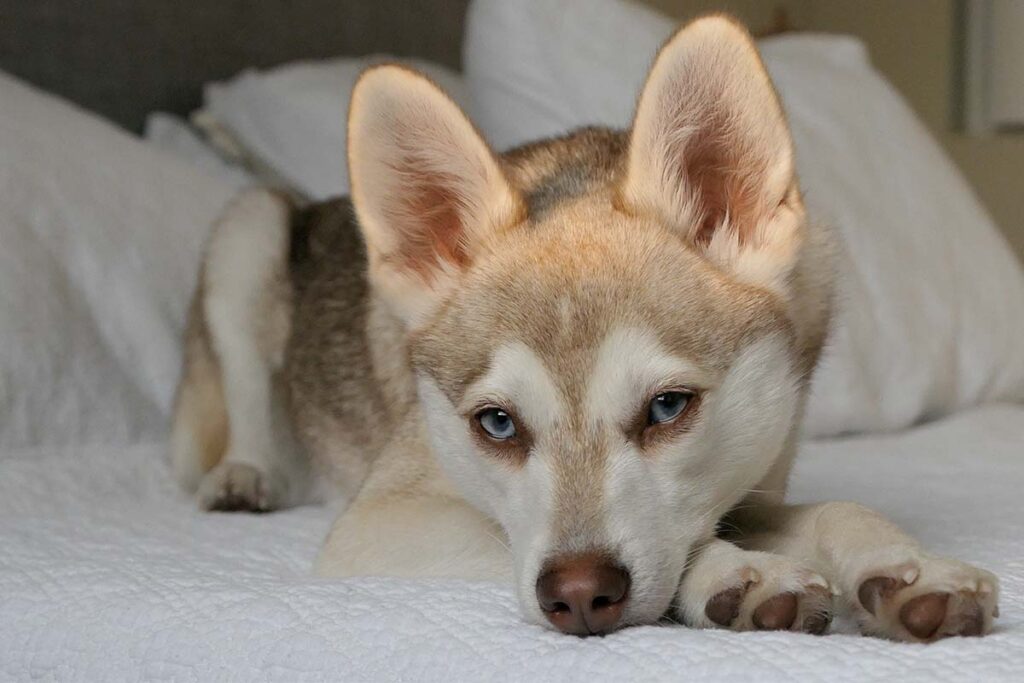
We’ve reached the end of our discussion about Alaskan Klee Kai and separation anxiety.
It’s certainly a potential issue that I’d recommend all perspective Klee Kai owners research before deciding to get a member of this rare breed.
We continue to live with anxious Alaskan Klee Kai – and it’s a work in progress.
While we are able to leave Copper and Skye for long periods, it’s been a long journey. There are still some days when our Klee Kai struggle a lot with the issue.
If you do have an Alaskan Klee Kai suffering from severe separation anxiety, we’d recommend contacting a dog behaviorist with experience of this issue.
Kieran runs Life With Klee Kai on social media and other online platforms alongside his wife Yasmin. With over 10 years of experience as a journalist and a passionate dog owner, Kieran loves to combine his passion for pets and writing to share useful insights and product reviews to help other dog owners.

